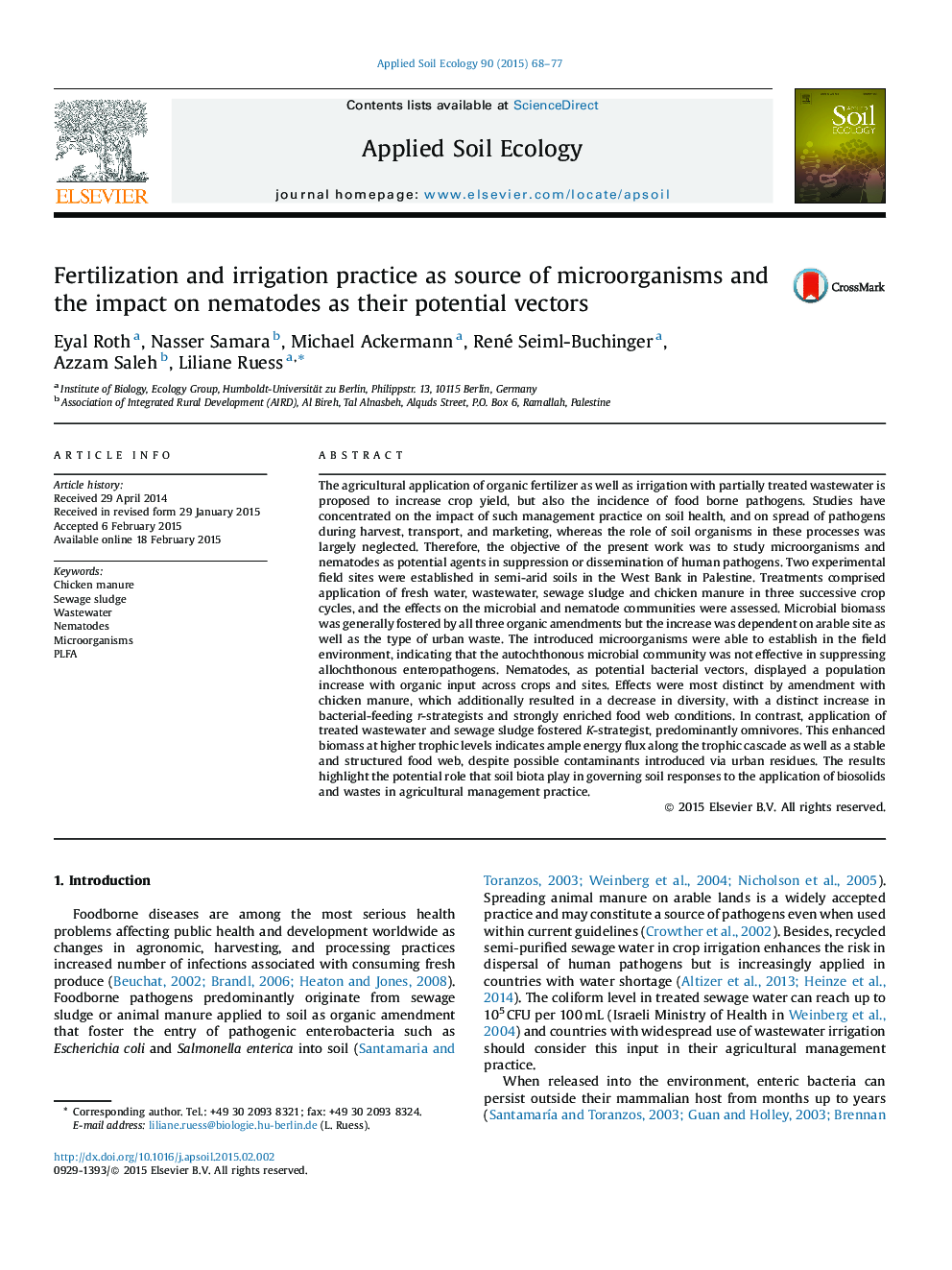| کد مقاله | کد نشریه | سال انتشار | مقاله انگلیسی | نسخه تمام متن |
|---|---|---|---|---|
| 4382008 | 1617793 | 2015 | 10 صفحه PDF | دانلود رایگان |
عنوان انگلیسی مقاله ISI
Fertilization and irrigation practice as source of microorganisms and the impact on nematodes as their potential vectors
ترجمه فارسی عنوان
تمرین باروری و آبیاری به عنوان منبع میکروارگانیسم ها و تاثیر آن بر نماتدها به عنوان بردارهای بالقوه آنها
دانلود مقاله + سفارش ترجمه
دانلود مقاله ISI انگلیسی
رایگان برای ایرانیان
کلمات کلیدی
موضوعات مرتبط
علوم زیستی و بیوفناوری
علوم کشاورزی و بیولوژیک
بوم شناسی، تکامل، رفتار و سامانه شناسی
چکیده انگلیسی
The agricultural application of organic fertilizer as well as irrigation with partially treated wastewater is proposed to increase crop yield, but also the incidence of food borne pathogens. Studies have concentrated on the impact of such management practice on soil health, and on spread of pathogens during harvest, transport, and marketing, whereas the role of soil organisms in these processes was largely neglected. Therefore, the objective of the present work was to study microorganisms and nematodes as potential agents in suppression or dissemination of human pathogens. Two experimental field sites were established in semi-arid soils in the West Bank in Palestine. Treatments comprised application of fresh water, wastewater, sewage sludge and chicken manure in three successive crop cycles, and the effects on the microbial and nematode communities were assessed. Microbial biomass was generally fostered by all three organic amendments but the increase was dependent on arable site as well as the type of urban waste. The introduced microorganisms were able to establish in the field environment, indicating that the autochthonous microbial community was not effective in suppressing allochthonous enteropathogens. Nematodes, as potential bacterial vectors, displayed a population increase with organic input across crops and sites. Effects were most distinct by amendment with chicken manure, which additionally resulted in a decrease in diversity, with a distinct increase in bacterial-feeding r-strategists and strongly enriched food web conditions. In contrast, application of treated wastewater and sewage sludge fostered K-strategist, predominantly omnivores. This enhanced biomass at higher trophic levels indicates ample energy flux along the trophic cascade as well as a stable and structured food web, despite possible contaminants introduced via urban residues. The results highlight the potential role that soil biota play in governing soil responses to the application of biosolids and wastes in agricultural management practice.
ناشر
Database: Elsevier - ScienceDirect (ساینس دایرکت)
Journal: Applied Soil Ecology - Volume 90, June 2015, Pages 68-77
Journal: Applied Soil Ecology - Volume 90, June 2015, Pages 68-77
نویسندگان
Eyal Roth, Nasser Samara, Michael Ackermann, René Seiml-Buchinger, Azzam Saleh, Liliane Ruess,
